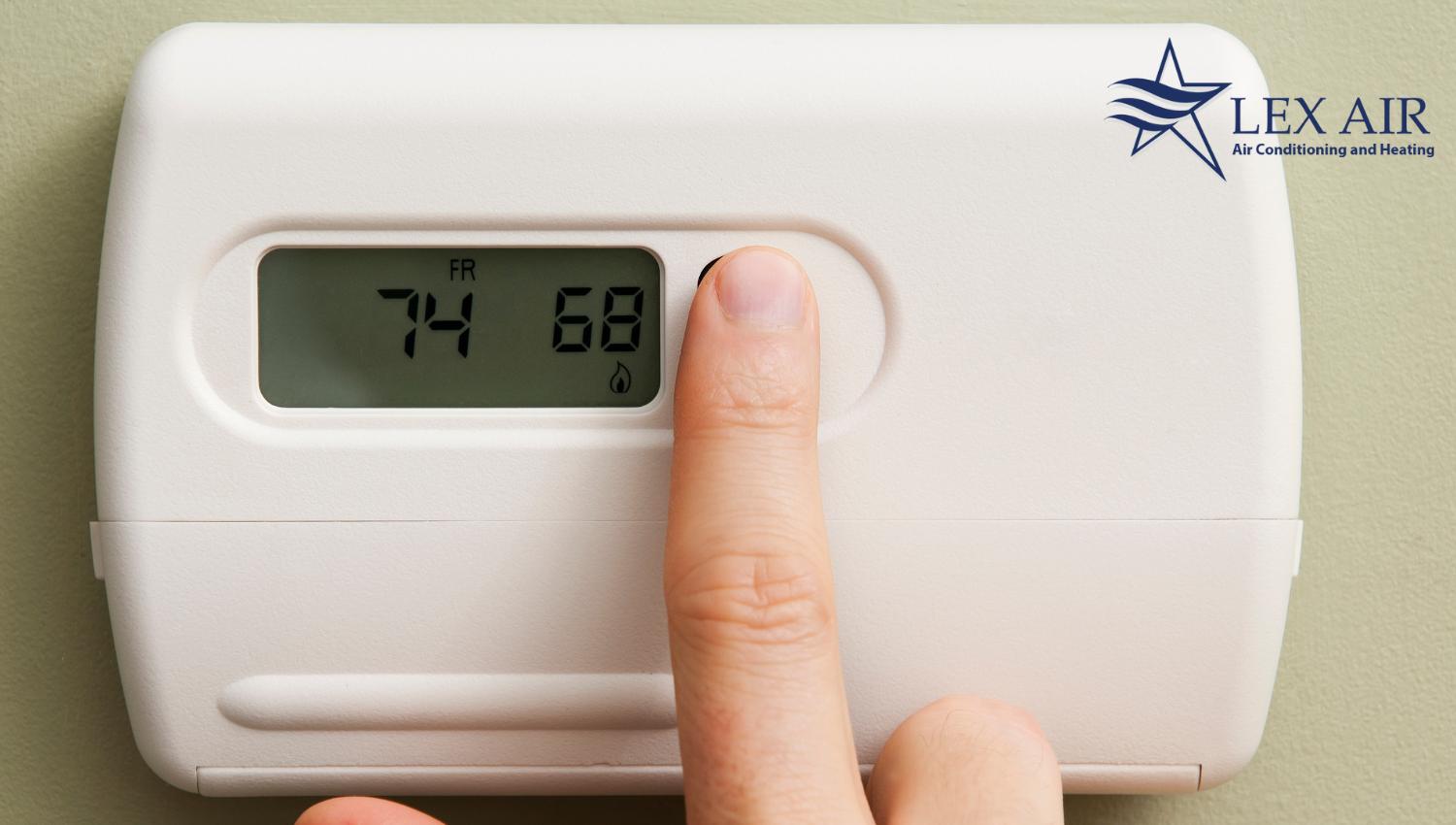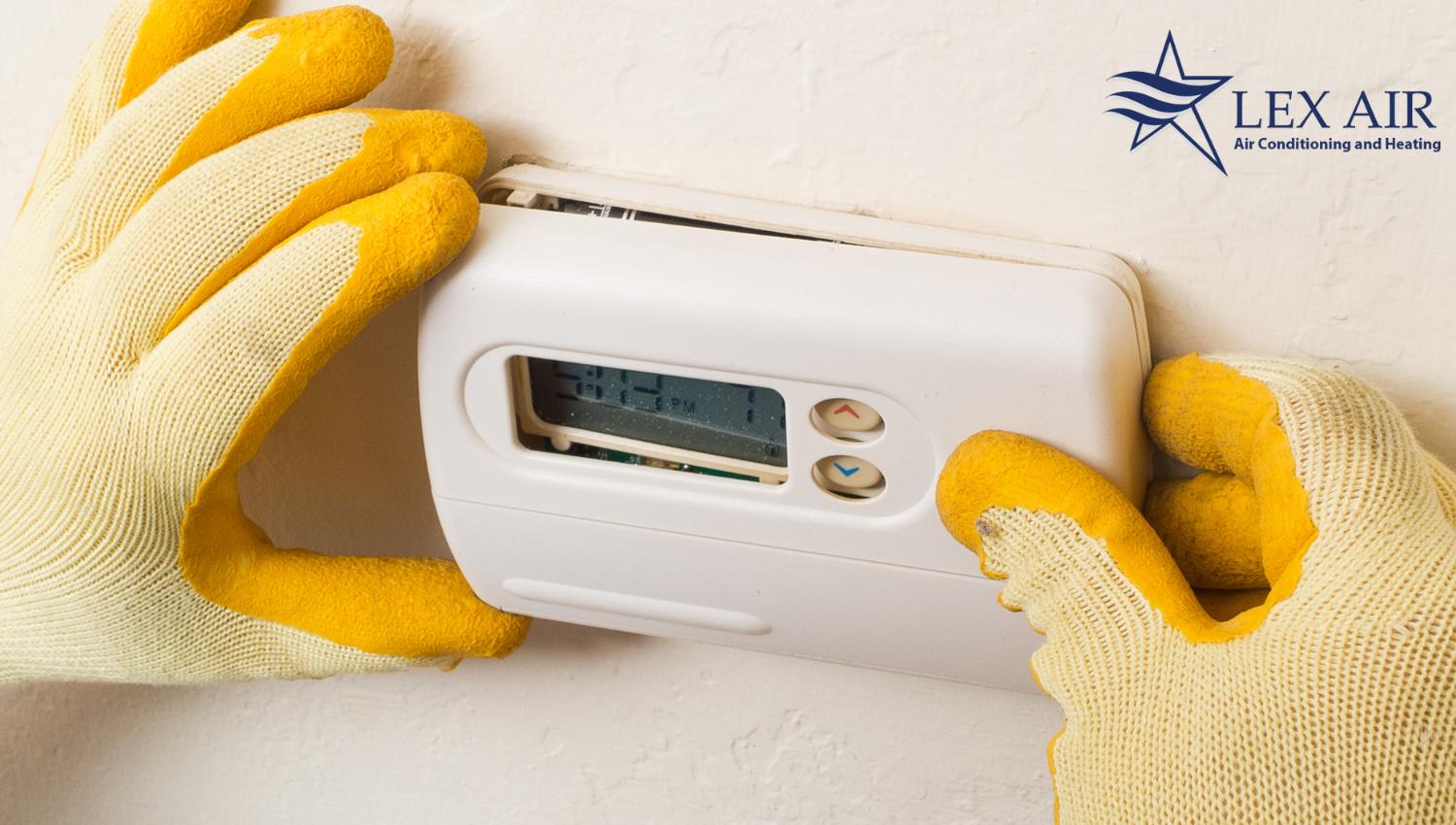While it can sometimes be overlooked, one of the most essential components of any cooling or heating system is the thermostat. A functioning thermostat can help you maintain the right temperature and create a pleasant environment in your home. If it’s malfunctioning, however, staying at home can be unbearable for you and your family.
If you’ve been experiencing thermostat issues, you may want to consider calling a professional thermostat technician from Lex Air Conditioning and Heating. Our team is dedicated to providing the residents of Carrollton, TX, and beyond with actionable solutions and expert repairs.
Call us at (972) 217-8955 or reach out online to schedule repairs, installation, or maintenance today.
Is My Thermostat Broken?
Your thermostat works as both the remote control for your HVAC system as well as a temperature gauge for your home. It can also help provide you with optimal temperature control, ensuring your home is comfortable while conserving energy.
HVAC systems have a lot of moving parts, but if you’re experiencing irregularities in your home’s temperature, or your thermostat readings seem inaccurate, you may be dealing with a bad thermostat.

Signs of a Faulty Thermostat
Identifying the signs of a faulty thermostat early can save you from costly repairs and ensure your system runs as smoothly as possible for as long as possible. Below are the three most common and easily recognizable signs of a failing thermostat.
Temperatures Differ from One Room to Another
If the rooms in your home significantly vary in temperature, it is a sign that something is wrong with your HVAC system. A well-functioning thermostat should maintain a consistent temperature throughout your home. When it fails, it can lead to erratic temperature changes or uneven heating or cooling, making some areas of your home uncomfortably hot or cold.
If your thermostat is set to the same temperature in multiple rooms, but the temperature varies drastically from room to room, you may want to troubleshoot or request repairs.
Air Conditioner or Heater Will Not Turn Off
If you find that your cooling or heating system is running constantly without turning off, it may be because the unit itself or the thermostat is malfunctioning. If it is the cause of the problem, it is most likely calibrated incorrectly and sending erroneous instructions to the unit.
If your home’s heat pump or air conditioner runs constantly, it could lead to excessive heating or cooling, increasing your monthly energy bills. Not only that, but it can also strain your HVAC system, potentially shortening its lifespan.
Thermostat Won’t Change Temperature
When you change temperature settings, your thermostat is supposed to respond immediately to the change. Usually, after setting it to your desired temperature, the thermostat will click, and then the system will start.
If you do not hear a clicking sound, or the unit does not start blowing hot or cold air shortly after you change the setting, it could be an indication that your thermostat is faulty. This could be due to electrical issues, a broken sensor, or simply wear and tear over time.

Why is My Thermostat Not Working?
There are many different things that could cause a thermostat failure, ranging from simple issues to complex problems. The most common cause of thermostat failure is age. Over time, the wiring and sensors can degrade, malfunction, or accumulate dust and debris, causing noticeable issues within your thermostat.
Another reason a thermostat may not work correctly is the power supply. If your thermostat fails to display the temperature, check the batteries or wiring to ensure it’s receiving power.
Additionally, if you’re experiencing a number of HVAC issues, you may not even have a bad thermostat. Things like leaking coolant or blocked air vents could decrease the efficiency of your system, which could cause your system to run more frequently or cause indoor temperatures to be inconsistent.
A professional HVAC technician can check your thermostat to ensure that it’s working correctly. If all seems to be well, they can also check for a coolant leak, check the coolant temperature, investigate your air ducts, and more to find the source of the problem.

How Long Do Thermostats Last?
The lifespan of a thermostat can vary significantly based on its type, usage, and maintenance. A well-maintained thermostat may last anywhere from 10 to 15 years. However, with the rapid advancements in HVAC technology, many homeowners today are opting to upgrade their thermostats sooner. Modern smart thermostats can provide more convenient temperature control and help improve the energy efficiency of your HVAC system.
How To Fix a Broken Thermostat
Dealing with a bad thermostat can be a daunting task, but there are several steps you can take before calling in a professional. Start by checking the basics: ensure it’s set to the correct mode (heating or cooling), the batteries are fresh, and that it’s calibrated correctly.
It seems like a simple answer to the problem, but sometimes, turning the thermostat off for a few minutes and then turning it back on can solve the issue. You can also remove the thermostat housing and visually inspect the thermostat. Accumulated dust or corroded batteries could cause a thermostat to malfunction.
For more complex problems involving things like sensors or wire connections, it’s advisable to seek professional help from an electrician for thermostat replacement. A certified HVAC or electric technician at Lex Air Conditioning and Heating can diagnose the problem and provide you with the best solution for your unique situation.

Should I Repair or Replace My Malfunctioning Thermostat?
When dealing with thermostat problems, there are often two options homeowners can choose from: repair the existing thermostat or replace it with a new one. If your system is very outdated, it may be more cost-effective to replace it rather than repair it. However, if you enjoy the functionalities of your current thermostat, you may want to keep it and simply have it repaired.
If you currently have a mechanical thermostat, you may want to consider upgrading to a smart thermostat. Not only will you have a new thermostat, but you will also be able to control the temperature in your home from anywhere using your phone. You can even set the temperature to change based on a programmed schedule, which can help reduce your energy bills and save you money over time.
While the decision to repair or replace is entirely your own, an HVAC technician can help you evaluate your options to ensure you choose the best option for you and your needs. We can provide you with repairs as well as replacement services, ensuring that your system is able to provide you with cool air or hot air as soon as possible.
For Thermostat Repair and Replacement in Carrollton, TX, Call the HVAC System Experts at Lex Air Conditioning and Heating
A thermostat is the command center for your home’s HVAC system, but when it starts malfunctioning, it can lead to a range of issues affecting comfort and efficiency. At Lex Air Conditioning and Heating, we are committed to ensuring your home’s heating and cooling system operates flawlessly.
Our experienced technicians are prepared to help with all of your heating, cooling, and thermostat needs. Whether you need a simple fix or a complete thermostat upgrade, our team is equipped to provide swift, effective, and practical solutions.
Don’t let a failing thermostat disrupt your comfort–call us at (972) 217-8955 or contact us online to schedule our services.













